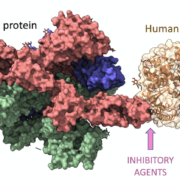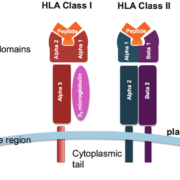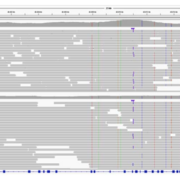A Guide to HLA Typing with Nanopore Long Read Sequencing
The human leukocyte antigen (HLA) complex plays a critical role in the immune system’s ability to distinguish between self and non-self. Accurate HLA typing is essential for many applications, including organ and stem cell transplantation, disease association studies, drug hypersensitivity research, and more. Next-generation sequencing (NGS) has revolutionized HLA typing by enabling high-resolution, high-throughput analysis. However, short read lengths have limited the ability to resolve certain HLA genes and alleles. Nanopore sequencing, with its ability to generate ultra-long reads, is overcoming these challenges and ushering in a new era of HLA typing.
The Importance of High-Resolution HLA Typing
HLA genes are the most polymorphic in the human genome, with over 28,000 alleles identified to date across the classical HLA loci. This extreme diversity is what allows the immune system to recognize such a wide array of pathogens and foreign antigens. However, it also presents a major challenge for HLA typing. To match donors and recipients for transplantation or to study disease associations, high-resolution HLA typing that unambiguously identifies alleles is critical. Mismatches can lead to graft rejection or graft-versus-host disease in transplantation or obscure true associations in research studies.Sanger sequencing has long been considered the gold standard for high-resolution HLA typing. But it is low-throughput, labor-intensive, and expensive. As a result, most clinical HLA typing still relies on low-resolution methods like sequence-specific oligonucleotide probes (SSOP) or sequence-specific primer (SSP) PCR. These methods can only define HLA types to the 2-digit or 4-digit level, which is often insufficient.
Short Read NGS for HLA Typing
The advent of massively parallel NGS platforms like Illumina enabled high-throughput, high-resolution HLA typing for the first time. By sequencing individual exons or entire genes, NGS can provide unambiguous allele-level HLA types. However, short read NGS has several limitations for HLA typing:
- Phasing ambiguities: Short reads (100-300 bp) cannot span entire genes to determine which variants are on the same allele. This is a major issue for HLA genes which can have thousands of possible allele combinations.
- Difficulty mapping highly homologous genes: Short reads can mismap between the highly similar HLA genes, such as between HLA-DRB1 and its paralogues.
- Inability to detect novel alleles: Novel polymorphisms in primer binding sites can lead to allele dropout. Short reads also can’t detect novel alleles that differ outside of the targeted regions.
- PCR amplification biases: PCR is required to enrich for the HLA genes prior to short read sequencing. But PCR biases can skew allelic ratios and lead to imbalanced coverage.
Long read sequencing is needed to overcome these limitations and take HLA typing to the next level of accuracy and completeness.
Nanopore Sequencing Enables Long Range, Single-Molecule HLA Typing
Nanopore sequencing works by measuring changes in electrical current as DNA strands are threaded through a protein nanopore. This allows for real-time sequencing of ultra-long reads (>1 Mb) from single molecules without the need for PCR amplification.The long read lengths of nanopore sequencing offer several key advantages for HLA typing:
- Allele-level phasing: Nanopore reads can easily span full-length HLA genes to provide complete, phased sequences of individual alleles without ambiguity.
- Accurate mapping of homologous genes: Long reads ensure unique alignment, even between highly similar genes and pseudogenes.
- Detection of novel alleles: Nanopore sequencing captures the complete nucleotide sequence, allowing identification of novel alleles, even in previously uncharacterized regions.
- Elimination of PCR bias: Single-molecule sequencing directly from DNA eliminates PCR amplification bias for more accurate allelic ratios and balanced coverage.
- Epigenetic characterization: Nanopore sequencing is sensitive to base modifications, enabling simultaneous detection of methylation and other epigenetic marks that may be important for HLA expression and function.
With these advantages, nanopore sequencing is poised to become the new gold standard for high-resolution HLA typing. Several recent studies have demonstrated the feasibility and accuracy of nanopore sequencing for HLA typing.In one study, researchers used the Oxford Nanopore MinION to sequence full-length HLA class I genes from 30 samples. They achieved 100% accuracy at the protein level and identified several novel alleles. Another group used nanopore sequencing to type HLA class I and II genes from 100 samples, achieving over 99% accuracy compared to reference methods. Nanopore sequencing also enables on-site HLA typing in low resource settings. One team successfully performed nanopore HLA typing in the field during the 2018 Kilauea lava flow disaster in Hawaii. With a simple USB-powered MinION device, they were able to generate accurate nanopore HLA types in just 3 hours to facilitate rapid identification of victims.
The Future of HLA Typing with Nanopore Sequencing
As nanopore sequencing continues to improve and costs decline, it is likely to become the method of choice for high-resolution HLA typing across a range of applications. In addition to more accurate and complete HLA typing, nanopore sequencing will enable several exciting frontiers:
- Rapid, point-of-care HLA typing for solid organ and stem cell transplantation
- Improved HLA imputation reference panels for population genetics studies
- Detection of full-length HLA fusion genes and other rearrangements
- Characterization of HLA methylation patterns and their role in disease
- Single-cell HLA typing to study allele-specific expression
- Simultaneous HLA typing, whole genome sequencing, and metagenomic profiling
With these capabilities, nanopore sequencing is ushering in a new era of HLA typing that will advance basic research, clinical diagnostics, and precision medicine. Overcoming the limitations of short read NGS and traditional methods, nanopore sequencing will help unlock the full potential of HLA typing to improve human health.

 The Sequencing Center
The Sequencing Center





 The Sequencing Center
The Sequencing Center
Leave a Reply
Want to join the discussion?Feel free to contribute!